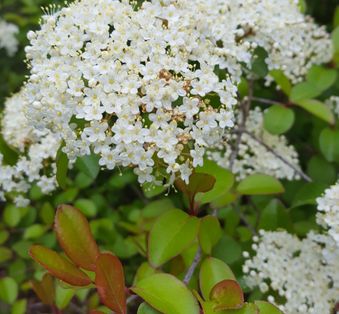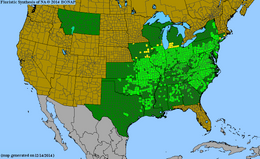Black haw is usually grown as a large, upright, multi-stemmed, deciduous shrub with an irregular crown, but it also may be grown as a single trunk tree. As a shrub, it typically grows 15–35' tall with a spread of 15–25', but as a tree may reach a height of 30'. White, flat-topped flowers appear in Spring. Flowers give way in autumn to blue-black, berrylike drupes which often persist into Winter. Fruits are edible and can be eaten raw or used to make wine, jams, and preserves. Easily grown in moderately moist, average to dry soil in full sun to part shade. Tolerates clay, black walnut trees, and drought. Durable and pest-free.
Black haw is native to eastern North America. It is found in sunny, moist woodlands with well-drained soil. In the northern parts of its range, it is a shrub; in the southern parts, it becomes a small tree. The nectar and pollen of the flowers attract primarily small bees and flies. Other visitors include butterflies, moths, and ants. The viburnum leaf beetle feeds on the leaves. Migrating and overwintering birds eat the fruits. Deer browse on the twigs and leaves. Virburnums are a host plant for 101 species of butterflies and moths, including hummingbird and snowberry clearwing moths.
BONAP Native Range Map (bright green indicates county native, dark green indicates state native)
Photo by Kathy Thornton


